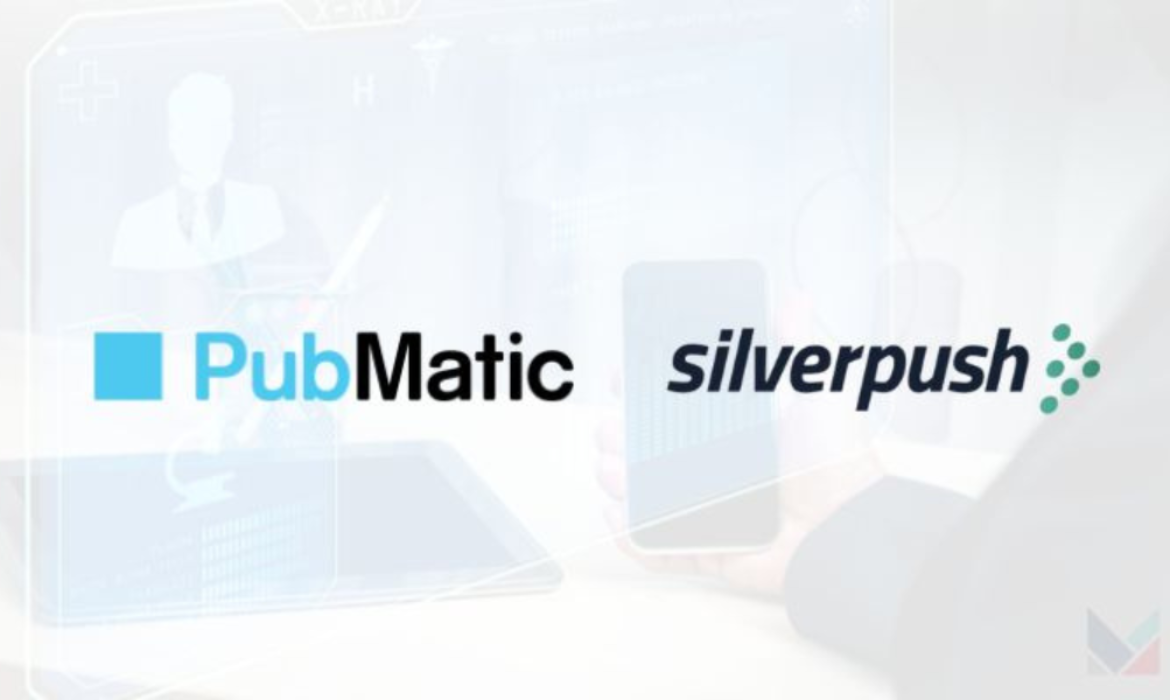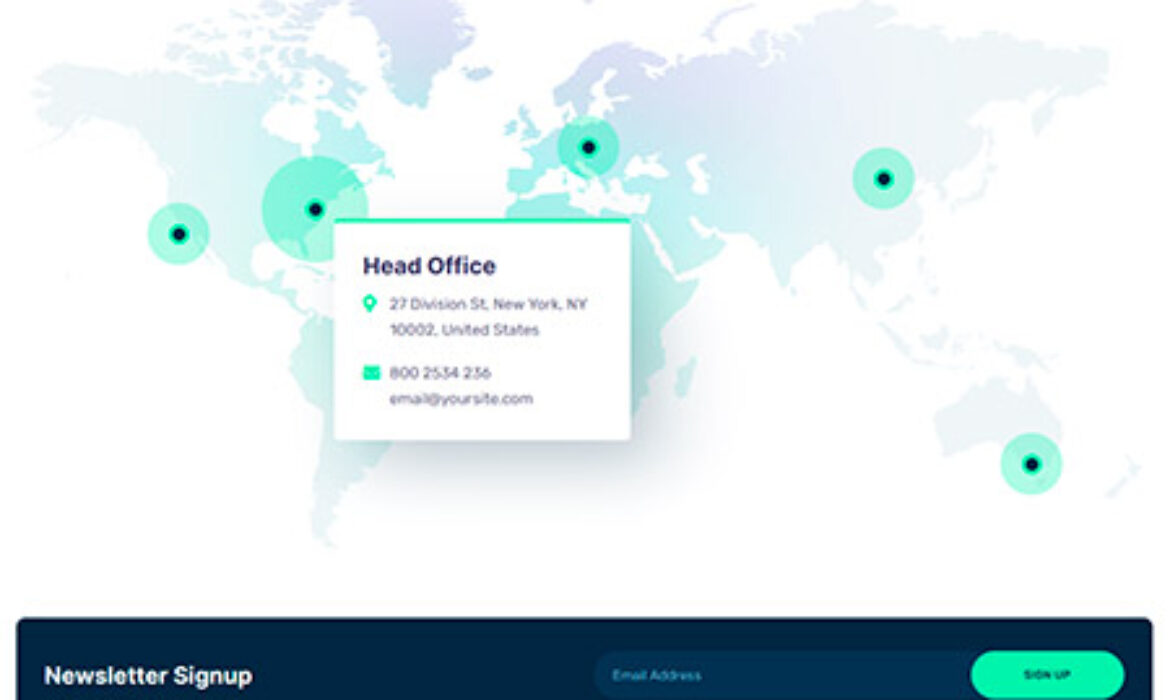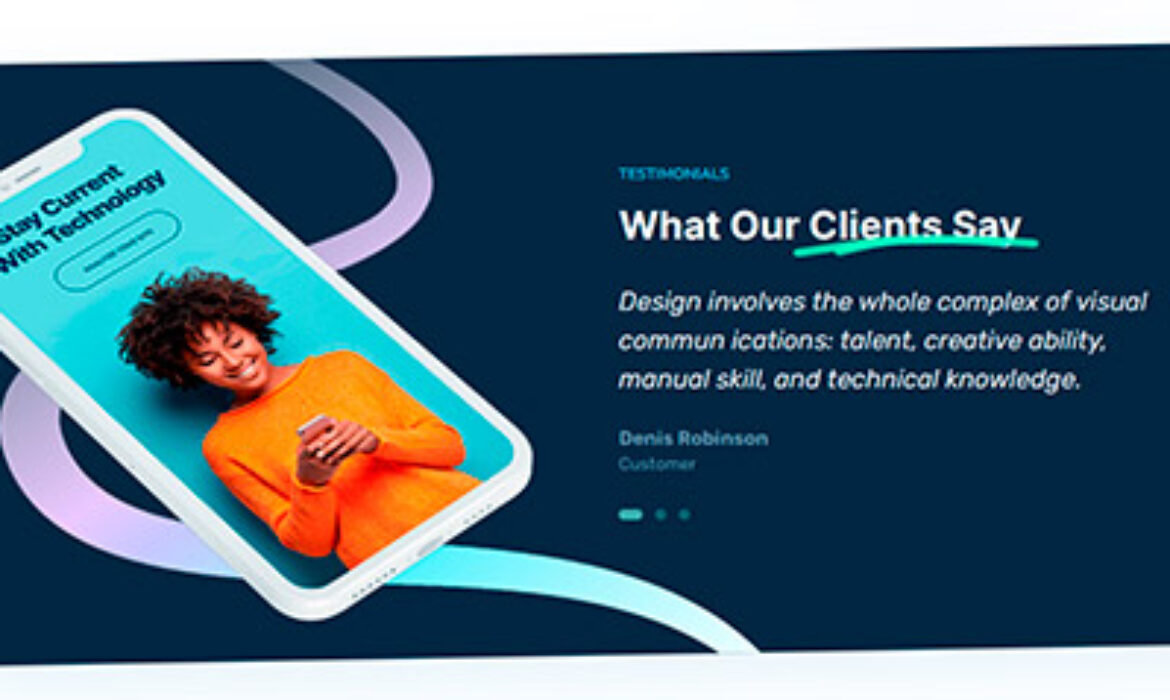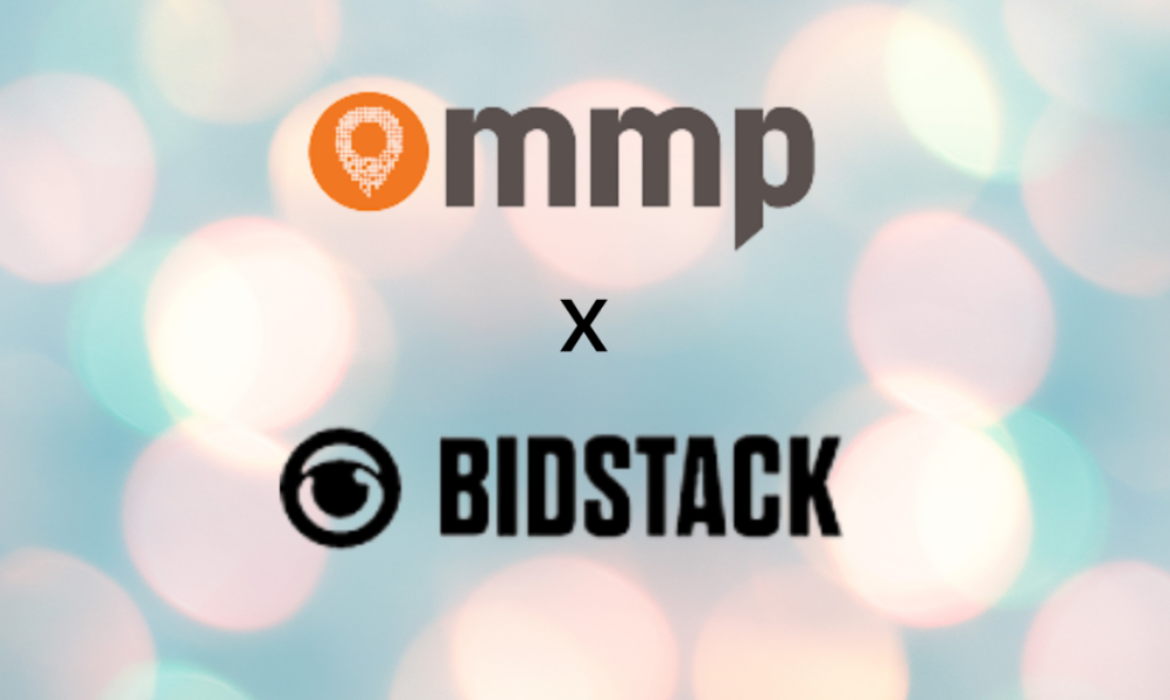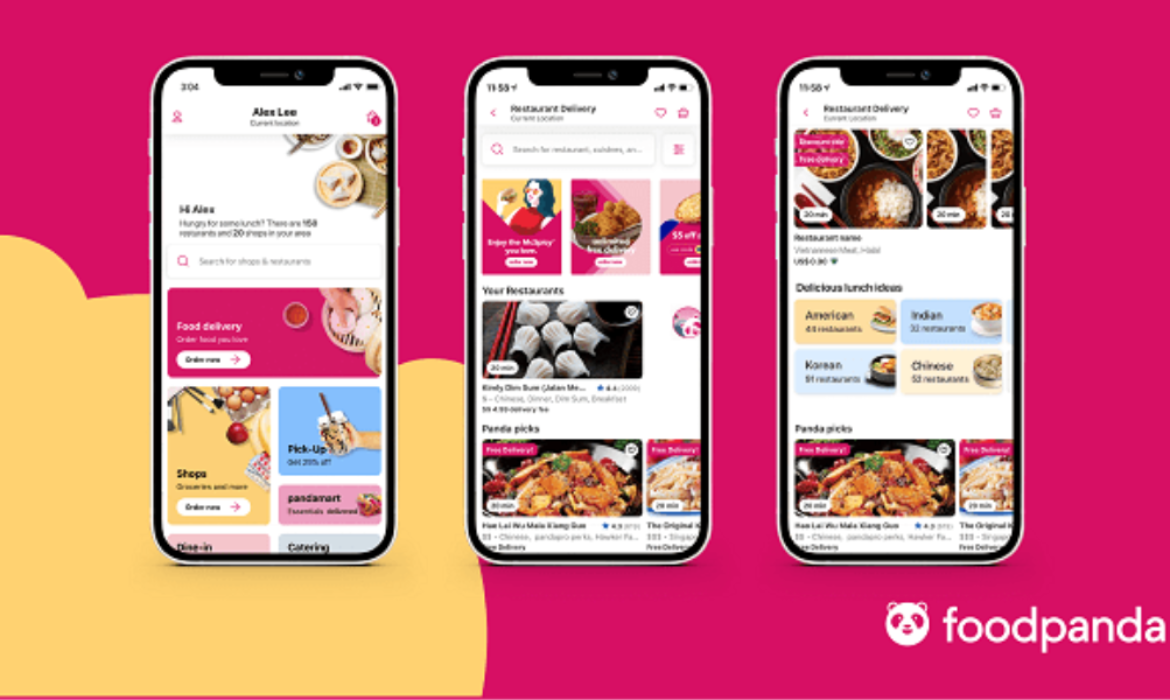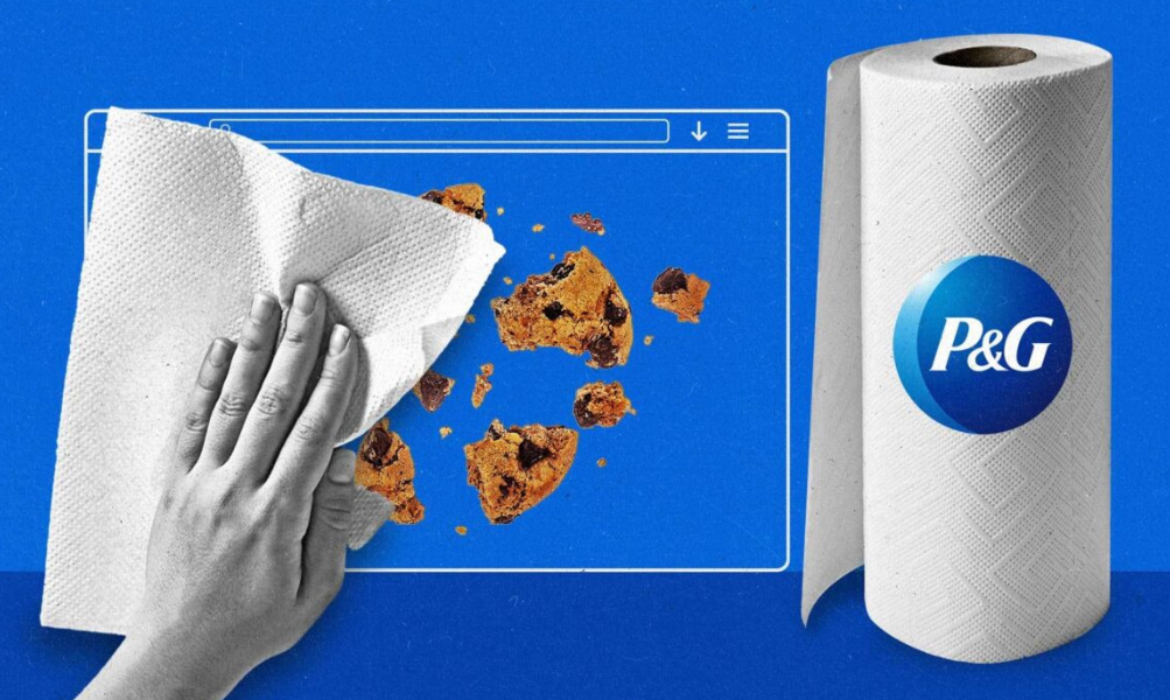LightBoxTV Extends Range with Total TV Solution for CTV Campaigns
With the addition of a full-service Total TV Solution, LightBoxTV, the top CTV planning and analytics platform, introduces the extension of its product line. This comprehensive solution, built on LightBoxTV’s patented technological platform, enables clients to rely on LightBoxTV with their media spending and benefit from a thorough managed service for executing CTV campaigns on its behalf.
What’s in it for advertisers?
Advertisers are challenged with effectively targeting consumers in a diverse setting, including BVOD, AVOD, FAST, and YouTube channels, as TV viewing shifts to streaming platforms. Media buyers that want to connect with their target consumers have difficulties in this complex CTV landscape. LightBoxTV is a trailblazer in the sector thanks to its origins as a software platform created to address these issues. LightBoxTV’s newest offering, a managed solution, combines proprietary planning software, data insights, and team knowledge. Furthermore, it aids in executing precisely targeted campaigns built around this technology-centric strategy.
Read More: Loop Media-Microsoft Advertising Forge New CTV OOH Inventory Category
The Full-Service Total TV Solution Benefits
Comprehensive Campaign Planning
LightBoxTV serves as a strategic partner, providing audience targeting and data-driven insights to develop effective CTV campaigns.
Ease of Access to the Segmented TV Space
LightBoxTV offers marketers a single point of access to manage campaigns seamlessly across a variety of inventory outlets such as BVOD, AVOD, FAST, and YouTube environments.
Campaign management and activation
LightBoxTV manages and activates campaigns. Furthermore, it also ensures smooth delivery across various platforms.
Accurate Performance Reporting
LightBoxTV offers thorough insights into campaigns’ performance, empowering marketers to make informed choices and improve upcoming campaigns.
With a variety of tailored audience packages available at launch, the system gives customers turnkey choices. These choices are in line with varied campaign objectives. Alternatively, users may partner with LightBoxTV to develop a custom plan for a particular target market. It will guarantee that their campaigns are effective.
Read More: Unlock The CTV Opportunity: What The Future Looks Like
Here’s what they said
Mark Giblin, CEO of LightBoxTV said,
Our vision has always been to simplify the complexities of CTV advertising through innovative technology and data-driven insights. With the launch of our Full-Service Total TV Solution, we are excited to offer advertisers a comprehensive and strategic approach to navigate the evolving TV landscape and deliver successful campaigns.
Read More: PubMatic Takes On DSPs in Video & CTV Deals, Aims for Direct Access
Advertisers Embrace Programmatic Advertising As Cookies Decline
The use of unreliable and mostly independent third-party cookies is coming to an end. What the industry does next is currently up for discussion. While some solutions will look at the context of a webpage, others will concentrate on interest, and some will try to develop a widely used but privacy-first ID system. Over the coming year, the majority of advertisers and agencies want to increase their programmatic spending while third-party cookies continue to be phased out. About 58% of advertisers are unprepared to operate in the cookie-less world, according to Warc’s research. The cause is cited as a lack of practical knowledge of how their work is still impacted by evolving privacy laws. Additionally, the report noted that more than 60% of marketers have reservations about reaching audiences without the use of third-party cookies.
Cookies Phase Out Story Until Now
Google stated that it would stop enabling third-party cookies in the Chrome browser in 2021. Other browsers rapidly followed suit after this. The advertising industry was rocked by this news, leaving marketers unsure of what to do next. However, companies are recognizing the chances to monetize the advertising industry through their ecosystems, despite any potential downsides. Advertisers realize the advantages of properly framing their advertising and connecting with people by meeting their requirements. Additionally, they can guarantee user data security and foster transparency. By enabling end users to place more trust in companies, the improved security has enabled advertisers to forge closer connections with consumers.
Around 95% of the web is expected to anonymize with the phase-out of third-party cookies. It has greatly increased prospects for new ecosystems to arise by leaving a vast hole on the internet. However, due to several unanticipated circumstances, the phase-out was extended until 2023. The UK and the EEA’s revised privacy laws, Google’s testing of the Federal Learning of Cohorts (FLoC) and Privacy Sandbox, and a high level of user demand for enhanced transparency are the causes.
Google is now planning to roll out this modification gradually, starting with 1% of Chrome users in early 2024. Developers will be able to evaluate their preparation for the wider shift during the initial phase, which will act as a practical test. A considerable change in advertising tactics is necessary as a result of the deprecation of third-party cookies. Adversaries need to investigate alternatives to specific user tracking for targeting and measurement. It is advised to negotiate the change by utilizing first-party data, investing in contextual targeting, and working with business partners.
Read More: End Of Third-Party Cookies, What Is There For Marketers: Takeaway!
The Current State of the Programmatic Landscape
Over the previous few years, programmatic ad spending has doubled due to exponential growth. Programmatic advertising has become a major role in the dynamic world of ad technology. Since its introduction, it has been significantly advancing the advertising sector. The buying and selling of ad inventory has been streamlined and made more effective than ever thanks to its automation features. In 2023, as we reach the halfway point, a few things have changed. Advertisers should keep a close eye on a number of programmatic advertising trends to maintain an edge over rivals.
Examining Possible Replacements for Third-Party Cookies
Cookies are being resisted due to privacy issues. Publishing companies must therefore prioritize identifying options for the third party. However, research from Adobe claims that 74% of users still rely on third-party cookies, and this is worrying. However, according to a different survey, 41% of marketers still think that removing third-party cookies will be one of the most difficult tasks. Therefore, in order to prevent any interruptions to their advertising campaigns, marketers will need to find alternatives to third-party cookies.
Growth of DOOH
In the years following the pandemic, offline buying has increased. More and more individuals are going to physical stores to make purchases. The recent boom in programmatic advertising is unrestricted by cookie regulations. As a result, marketers ought to concentrate on billboard advertisements. People’s interactions with offline advertising are vastly improving. This includes interactive display ads, 3D billboards, and more. The amount spent on digital out-of-home (DOOH) advertising in the United States will increase by around 11.4 percent to almost 2.94 billion dollars by 2023, predicts Statista. This represents more than one-third of the yearly expected OOH ad spending in the US. For the first time ever, in 2023, DOOH ad expenditure will surpass the pre-pandemic spending recorded in 2019. Additional digital screens are appearing for advertisement across the nation. Programmatic strategy is well-positioned to secure a significant chunk of this spending in the upcoming years.
Building programmatic efficiency with AI and ML
The application of AI and ML is a further development in the field of programmatic advertising. Both advertisers and publishers can greatly profit from these technologies. With the help of AI, publishers can better understand their audience, increase user involvement through tailored recommendations, and automate the generation and optimization of content. This leads to scalable presentation and better comprehension. On the other side, AI and ML can quickly analyze vast amounts of data for advertisers. Campaign targeting and automation are now more successful than ever.
The growth of video advertisements.
The popularity of video commercials is predicted to skyrocket. According to Statista, expenditure on video advertising is anticipated to reach 176.6 billion dollars by the end of 2023, growing at a CAGR of 6.80%. The average ad expenditure per internet user in the market for video advertising is anticipated to be 33.13 in 2023. Additionally, connected TV spending is estimated to amount to $30 billion. Furthermore, with better-quality inventory and more straightforward measurement, programmatic video is becoming a more premium medium. Programmatic video is leading the way toward a more creative, targeted, and interactive advertising environment. In general, video advertising is growing rapidly in programmatic advertising.
Read More: And Google Does It Again, Delays Phaseout of Third-Party Cookies
Programmatic advertising without third-party cookies
Programmatic advertising has historically used third-party cookies to target particular audiences. However, the ability of marketers to follow and target audiences on the web is declining due to the gradual decline of the third-party cookie and the adoption of new privacy rules. Programmatic ecosystem scaling has also resulted in the expansion of innovative channels, including connected TV, gaming, programmatic audio, retail, and digital out-of-house.
There is a rush to define what a cookie-less future might entail with third-party cookies on their way out. Programmatic advertising will change, but its status as a crucial tool for digital marketing will endure. In 2023, Statista expects that programmatic ad spending will surpass $550 billion globally. And as technology develops year after year, programmatic advertising remains an interesting field thanks to improved software and algorithms.
According to a report, Dentsu predicts 28% and 15.2% growth rates for retail media and CTV in 2023, respectively, in emerging digital sectors. Additionally, programmatic advertising will account for 71.4% of all digital spending, an increase of 14.4%. According to a different survey by IAB Europe, 74% of advertisers, 80% of agencies, and 68% of publishers anticipate that investments in programmatic trading would rise over the ensuing 12 months. In addition, CTV has become the main growth sector, with more than 50% of stakeholders linking it to the acceleration of programming growth over the coming year.
Controlled first-party cookies are prominent in programmatic advertising trends since Google still permits first-party data. It is fantastic for locating the correct audiences on the appropriate platform at the appropriate moment and for contextual advertising. From 2023 to 2035, contextual marketing is expected to grow by 18%. However, to maximize results and ROI, marketers are playing a smart game with the distribution of their ad spend budget.
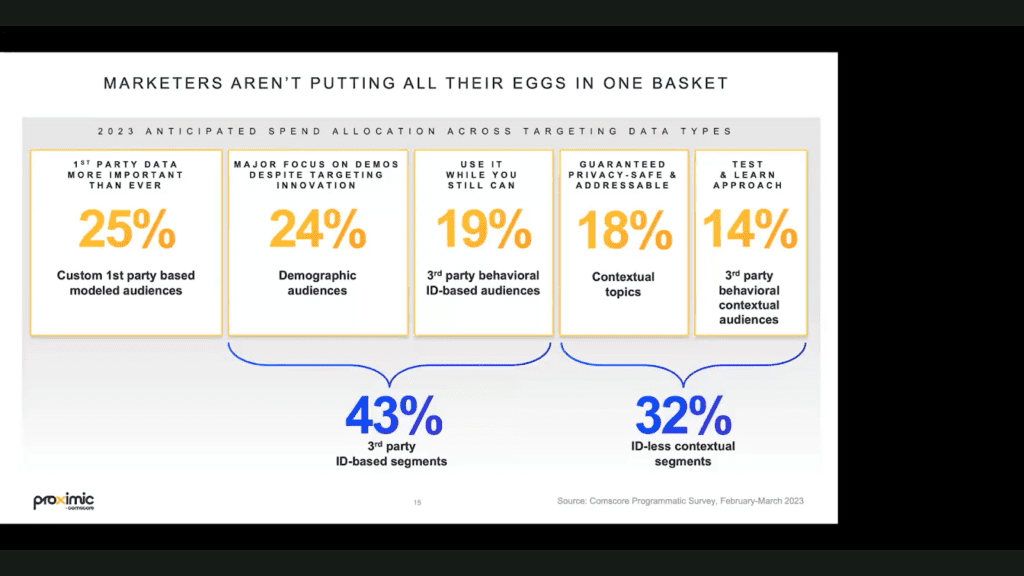
Image credit- AdMonsters
Read More: Relief To Advertisers As Google Postpones The Elimination Of Third-Party Cookies Till 2023.
Challenges facing post-third-party cookies arena
However, advertisers still experience difficulties. Lack of consistency is the biggest challenge brands face in managing media networks. They claimed there was annoyance with the quantity, caliber, and uniformity of data and reporting offered by each channel. This increased the brand teams’ efforts and made cross-platform comparisons challenging. The “walled-garden environment” that companies encounter when operating within the ecosystem presented advertisers with their second issue. They remain in the dark regarding their activations, which makes it difficult to maximize their deployment and return on investment. 44% of advertisers reported this problem.
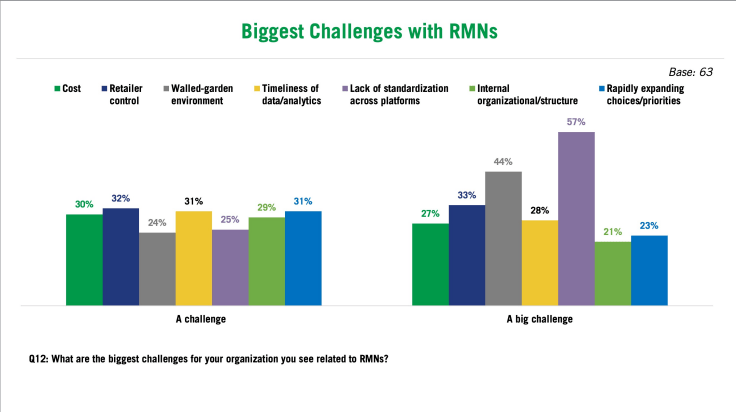
Image credit- ANA
Advertisers continue looking for alternatives to third-party tracking cookies, as cookies completely phase out starting in 2024. They are also investigating more contextual and interest-based targeting models. They include those based on images, audio, location, content sentiment, time, and weather. Additionally, they are working more closely with publishers, platforms, and tech suppliers to take advantage of shared data and insights as they push further to gather first- and second-party data to learn more about their customers. They have, however, also made several cautions about the expansion of programmatic channels.
The demise of third-party cookies marks a critical turning point for the industry. Advertisers are reacting to the novel situation. They now need to adopt cutting-edge tactics and technology to respect consumer tastes and confidentiality while retaining useful functionality. This will turn out to be the real test for them to tap into their creative side!
Read More: Google’s Phasing Out of Third-Party Cookies: A Paradigm Shift in Digital Advertising
Petal Ads Announces Partnership With MMP WorldWide
Petal Ads, previously known as Huawei Ads, has teamed up with MMP World Wide (MMPWW) to expand its reach in international markets, particularly China. The partnership comes on the heels of MMPWW’s acquisition by the out-of-home provider, Life on Screen. This collaboration will enable MMPWW to broaden its portfolio of ad networks by accessing exclusive Huawei audiences and further bolster its presence in international markets.
Petal Ads is collaborating with MMP World Wide (MMPWW) to enhance immersive solutions in the MENA region. The partnership aims to provide consumers with unique experiences and multiple activation options by leveraging MMPWW’s programmatic expertise. Petal Ads will also be able to monetize their digital ad inventory more effectively and boost campaign performance through targeted programmatic in-app advertising.
Petal Ads will provide MMPWW inventory on Huawei’s media platforms such as AppGallery, Huawei Video, Huawei Music, and Petal Search. This means that advertisers will have access to a wider audience and more targeted advertising options on a global scale. Overall, this collaboration is set to revolutionize digital advertising in the MENA region and beyond.
Campaign Middle East quotes William Hu, Managing Director of Huawei Consumer Business Group, Middle East and Africa Eco-Development and Operation said,
We are delighted to collaborate with a regional powerhouse like MMP WorldWide and are confident that this collaboration will usher us into a new era and open new doors for advertisers in the region. At Huawei, we are always interested in forming partnerships with companies that are at the forefront of the ad-tech industry and understand the power of programmatic advertising and its role in brand building. Through this collaboration, we hope to provide advertisers with new ways to target customers by leveraging the Petal Ads ecosystem.
Ayman Haydar, CEO of MMP World Wide further said,
We are excited to be a Petal Ads certified partner and look forward to collaborating on bringing these exclusive solutions to the market. Huawei already has a significant market share in the MENA region and is steadily expanding its customer base, and I am confident that we can effectively offer the industry this Petal Ads ecosystem. With China now easing up travel restrictions, the timing is perfect for us to help MENA advertisers target more effectively in the biggest market in the world.
Silverpush and PubMatic join hands for better digital advertising in APAC
PubMatic and Silverpush have announced a strategic partnership aimed at enhancing brand and advertiser connections with target audiences in the APAC region using data-driven advertising. The partnership will enable advertisers to leverage Silverpush’s AI-powered contextual data programmatically through Connect, PubMatic’s audience solution. Connect provides privacy-compliant solutions for engaging audiences without relying on third-party cookies or outdated strategies.
With this partnership, advertisers gain access to valuable audience data, which can be applied on the sell side to improve campaign efficiency. This collaboration will allow advertisers to access PubMatic’s premium inventory and use Silverpush’s hyper-contextual targeting capabilities to reach their targeted audience, driving engagement and conversions. The partnership is set to take effect immediately, with both companies working together to deliver their shared vision of providing powerful, data-driven tools for advertisers to achieve their marketing objectives in the APAC market.
Silverpush is an advanced AI-powered advertising solutions provider, specializing in innovative and data-driven strategies to solve complex client problems. Its flagship products, Mirrors and Parallels, offer cutting-edge technology to reach the most relevant audience in a brand-safe environment through contextual video ad placement targeting. By partnering with PubMatic’s audience solution, Connect, advertisers can now access premium inventory and leverage Silverpush’s hyper-contextual targeting capabilities to reach their desired audience in the right context and drive engagement and conversions.
Brandon Lee, director, Addressability APAC at PubMatic, said:
We’re thrilled to be partnering with Silverpush – together, PubMatic and Silverpush will provide advertisers with a powerful suite of data-driven tools to help them optimise their campaigns and achieve their marketing objectives.
Bringing targeting to the sell-side, via Connect, means buyers can gain greater control over how inventory and data are packaged and transacted to drive the best performance for their campaigns.
Raushida Vasaiwala, VP-APAC at Silverpush, said:
We are excited to partner with PubMatic to provide our AI-powered contextual advertising solutions for a wider reach of audience in the APAC market, starting from Indonesia. This partnership will enable advertisers to create highly targeted campaigns that are based on real-time consumer contexts, delivering better campaign results and ROAS.
The partnership is set to take effect immediately, with both companies working closely together to deliver their shared vision.
Interesting Read: PubMatic Partners with Comscore’s Proximic for ID-Less Targeting
Huwaei Ads Rebrands As Petal Ads
HUAWEI Ads, a programmatic digital advertising platform, with enhanced marketing offerings rebranded as Petal ads starting in December. In an e-mail to all the marketers, the company stated that this is the right time to reflect on the growth of the ad ecosystem and begin a new era as Petal Ads.
Huawei Ads offers advertisers the opportunity to advertise their brands through targeted campaigns on the extensive Huawei mobile ecosystem, which allows advertisers to grow their business quickly. Since its launch in 2017, the tech company has worked closely with advertisers, media, and publishers to develop an expansive ad ecosystem.
Over the years, they have integrated 360,000 global publishers and served over 4 billion daily ad requests. It has evolved and the reach has grown beyond Huwaei devices. The company is constantly adding new ad features to improve partner experience. Next year new ad experiences will be under Petal Ads.
Interesting Read: The Journey From Deterministic To Probabilistic Marketing
Horizon Media Strikes A Supply Path Optimization Deal With PubMatic
Horizon Media, the largest media agency in the U.S. announced a supply path optimization (SPO) partnership with PubMatic. As part of a plan to consolidate its SSP partners, it collaborated with Pubmatic to provide advertisers with a data-driven advertising scale. Buying premium media inventory has become increasingly complex across formats and devices, with new challenges in targeting fragmented audiences. This partnership will add value to Horizon Media clients’ direct, transparent, and simplified access to high-value audiences and premium inventory, including CTV, at an unprecedented scale.
The consolidation plan will help Horizon Media to create a smaller decision tree that will in turn aid to make faster, better auctions. Jesse Fisher, SVP Programmatic & Data, Horizon Media said,
“Horizon’s relationship with PubMatic gives our clients access to audiences at scale across channels, including CTV, and they are aligned with our own innovation to ensure our success and leadership in the future of digital advertising.”
“Horizon Media now offers a unique combination of tools for increased cost-savings, along with access to new and exclusive product offerings with PubMatic.”
Horizon’s clients who purchase open-auction inventory through its HX trade desk will be able to use PubMatic’s intelligent bid optimization to automatically move to spend to inventory that maximizes the advertiser’s return on marketing investments. PubMatic will automate the optimization of open exchange media buying all in one place, providing better efficiency, insight, and performance for Horizon Media’s clients.
Publisher inventory can be optimized more granularly through PubMatic’s ROI Sync, for instance. A tracking pixel compares the buyer’s historical performance data with conversion data. The advertiser’s bid is then adjusted in real-time based on publisher conversions.
Adexchanger quoted Fisher, “PubMatic will look at historical performance at the publisher ID and match that up against clearing price and win rate to make sure that, if they adjust your bids, they’re not going to hurt your ability to win those impressions.”
Horizon is also consolidating its SSPs because it no longer sees the need for so many and streamlines its operations.
Several SSPs tend to promise 90-95% US audiences reach, which results in a lot of redundancy. SSPs have different value propositions, which makes it difficult for the buy-side to understand. Fisher said to Adexchanger, Better inventory packaging made PubMatic stand out for a supply path optimization deal.
“ uses supply-side signals that are available to everyone, but they use them in very smart ways to build new products, like green media auction packages and PMPs.”
Furthermore, Horizon expects to become less dependent on third-party data partners by utilizing PubMatic’s data products such as ROI Sync and Identity Hub ID management tools. Kyle Dozeman, Chief Revenue Officer, Americas, at PubMatic said,
“Horizon Media is a great partner in driving efficiency, transparency, and innovation to enable the development of digital advertising and its benefits for brands, publishers, and consumers.”
“Their media buying scope combined with our omnichannel quality and scale provides one of the most robust media opportunities on the open internet for both brands and publishers. We’re looking forward to delivering more custom capabilities that further improve the media buying process, deliver deeper insights, and ultimately create more value.”
Interesting Read: The Journey From Deterministic To Probabilistic Marketing
Fox Partners With Magnite To Boost Programmatic Campaigns
Fox teams up with leading supply-side platform (SSP) Magnite to boost programmatic for OneFox, a platform that allows advertisers to buy inventory across Fox’s various media assets.
Magnite is FOX’s exclusive launch partner (e.g. seller) for its OneFOX platform. The company will build custom technology to streamline the buying process for Fox. Advertisers can create one unified programmatic-guaranteed plan to deliver their private marketplace and programmatic campaigns across Fox’s entire portfolio, including Tubi, their FAST streaming aggregator service and anchor of the streaming strategy. Furthermore, advertisers can plan easier, since they only need to deal with one vendor for PMP and programmatic guaranteed campaigns across FOX properties.
Interesting Read: Connected TV Explained: The Essential Glossary Of CTV
And that’s what they said
Dan Callahan, SVP Data Strategy and Sales Innovation at Fox Corporation said,
“In unifying our vast library of assets, we recognized the need to identify the right technology provider who could help deliver our premium inventory to advertisers.
Magnite’s programmatic expertise and industry-leading technology make them the perfect fit to connect buyers with FOX audiences across all our properties. We have been impressed by what Magnite has created to support our inventory monetization efforts and look forward to the growth of our relationship.”
Mike Laband, SVP, Programmatic Platforms at Magnite said,
“With OneFOX, FOX has consolidated its large audience footprint and as viewers shift to CTV and OTT, buyers have increasingly turned their attention to programmatic as a way to reach these audiences with greater efficiency.
We look forward to building out technology to support this shift and streamline access to FOX’s suite of premium inventory for advertisers.”
Interesting Read: The Journey From Deterministic To Probabilistic Marketing
MMP Worldwide Partners With Bidstack In MENA
MMP Worldwide announces a new exclusive partnership with Bidstack, the leading in-game ad tech platform across MENA. They aim to offer the next generation of programmatic in-gaming solutions to the market.
Bidstack is the leading in-game advertising and video game monetization platform that enhances the gaming experience with immersive advertising. It offers a range of non-intrusive brand opportunities with a worldwide reach. It provides multi-solution advertising access to the world’s biggest video games through ad formats like native in-game, in-menu, and rewarded video placements.
How is this partnership beneficial?
The opportunity for in-gaming advertising has been growing exponentially over the past few years. The MENA games market has quickly emerged as a key growth region for the global video game industry. Research estimates gamers reached 65.32 million in 2021, rising to 85.76 million in 202 in the region alone.
With MMPWW’s partnership, Bidstack will be able to scale immersive solutions across the Middle East and North Africa. With MMPWW‘s programmatic expertise, it can connect with consumers on the platforms they use most often with multiple activation options and unique experiences.
MENA is on its way to becoming a global hub for gaming, which is why this partnership is an important step for the investment scene in the region. This rapidly evolving space offers advertisers a great opportunity to take advantage of programmatic in-game advertising.
Businesses are increasingly turning to in-game advertising with impressive results – with over 3 billion gamers across the globe.
Interesting Read: Targetspot and Gadsme Unites to Launch In-Game Audio Ads
And that’s what they said
As reported by CampaignME, Walid Ramadan, general manager of MMP Experiences commented,
“This is one of the biggest launches we have done. We are continuing to set the agenda for the region by bringing the most innovative and cutting-edge solutions to our clients as they look to increase their digital presence in new ways, particularly as new opportunities continue to emerge in the sporting industry. By partnering with Bidstack we can offer these ground-breaking in-gaming formats, minimising disruption to the end user experience and helping marketers reach a new, engaged audience.”
Lewis Sherlock, EVP, Bidstack Technologies and Partnerships said,
“We’re delighted to be working with MMPWW across the MENA region to deliver authentic brand experiences that fit in seamlessly with the gameplay.
MENA is an important strategic market for Bidstack, and this innovative new partnership will help extend our sales effort into previously untouched markets. MMPWW will become our first buy-side enterprise sales partner in the region, and we are looking forward to working closely with them to unlock gaming as an engaging and effective new ad channel for their partners.”
Interesting Read: Meta Audience Network Announces Rewarded Interstitial Ads
Foodpanda Forays Into Adtech In Partnership With Group M
The largest food and grocery delivery platform Foodpanda officially announced the launch of panda ads, its suite of advertising technology (AdTech), and marketing solutions.
Originally introduced as a proof-of-concept in 2021, panda ads enable brands to reach millions of digital-native consumers beyond traditional channels. With the launch, foodpanda unveiled a suite of integrated advertising features, including the Foodpanda app, digital marketing assets, and new partnership programs. Through panda ads, foodpanda aims to help brands increase their visibility and reach, improve sales conversion, and build brand awareness to drive sales.
Interesting Read: Meta and JioMart Will Launch Chat-To-Cart Services In India
Accelerating the growth of Panda Ads In partnership with Group M
Food Panda has joined forces with leading media investment agency Group M in line with this launch. This partnership allows GroupM clients to tap into the fast-growing AdTech space by activating Foodpanda’s in-app advertising and other media assets and collaborating with foodpanda on brand partnerships and campaigns. The partnership spans seven markets – Singapore, Malaysia, Thailand, the Philippines, Pakistan, Hong Kong, and Taiwan.
Kiranjeet Singh Purba, senior director of advertising and partnerships at foodpanda, said in the blog post,
“foodpanda has worked extensively to improve our ads solutions over the past year, and we are excited to offer advertisers a new, full suite of ad solutions with panda ads. We are especially thrilled to kick off our panda ads launch with a partnership with leading agency GroupM, and believe this will help their clients tap into new areas of digital marketing in Asia.”
Meanwhile, Toni Ruotanen, head of commerce for APAC at GroupM Nexus, commented,
“Our partnership with panda ads covers an extensive region – across seven markets – opening up expansive possibilities for our clients in the digital and mobile space to enhance their brand visibility and increase business impact. panda ads’ innovative tech will see a great degree of personalization and targeted advertisements, which charts the way forward in retail media.”
With GroupM, Food Panda aims to bridge the online gap between brands and customers as well as enhance its Adtech vertical.
Interesting Read: Procter & Gamble Support Trade Desk’s Unified 2.0
Bridging the online gap for advertisers
As an integrated advertising solution, panda ads offers a full suite of advertising options, from static or carousel images to videos and lead-generating ads.
Brands can also leverage Foodpanda’s social media channels and enter collaborative partnerships across Foodpanda’s verticals. These build brand visibility and allow for performance tracking and monitoring. panda ads support brands with their digital marketing campaigns by providing-
- Using Panda ads, brands are able to plan and execute their digital marketing campaigns more quickly.
- Ad campaigns are designed and managed directly on Foodpanda’s platform which results in quicker implementation. In just two weeks after campaign approval, foodpanda’s ads can go live.
- Ad assets also have prime visibility on the order tracking page, which captures consumers’ attention for a longer period (up to 30 minutes for quick-commerce deliveries, for example), and as a result, video ads have a 70 to 80 percent completion rate.
- Advertisers tailor their campaigns to incorporate a variety of solutions, ranging from in-app advertising to digital marketing channels, depending on their unique objectives.
- Furthermore, foodpanda provides the largest reach in the region, across 11 markets — Singapore, Malaysia, Thailand, the Philippines, Cambodia, Laos, Myanmar, Hong Kong, Taiwan, Bangladesh, and Pakistan, providing the widest coverage among all on-demand delivery players in the region.
- Advertisers can run ads across all foodpanda verticals – including food delivery and pick-ups, grocery deliveries via Pandamart, and foodpanda shops. The Panda Ads network is ideal for brands who want to reach digital-native consumers who value convenience and order food and groceries regularly.
- Lastly, foodpanda offers exclusive advertising to selected partners with exclusive opportunities to collaborate with its beloved brand ambassador, Pau-Pau.
Brands that have already signed up for panda ads span a broad range of industries, including Tiger Brokers, Heineken, Huawei, and many others. Globally, the market potential for AdTech is expected to reach US$1 trillion by 2030. Separately, food panda’s parent company, Delivery Hero, predicted that AdTech services would generate more than €2 billion by 2024 or 2025.
Panda ads are designed to offer a seamless experience in the native app environment. It will support brands from the start to the end campaign journey- from ideation, activation, and measurement.
Interesting Read: The Journey From Deterministic To Probabilistic Marketing
Procter & Gamble Support Trade Desk’s Unified 2.0
Unified ID 2.0 (UID 2.0), the privacy-conscious identity framework spearheaded by The Trade Desk, is winning the support of Procter & Gamble, one of the largest advertisers in the world.
P&G senior executive Eric Austin said,
“P&G supports new solutions like Unified ID 2.0 that are designed to help improve the U.S. consumer advertising experience. Advertisers and publishers need a consumer-centric identity solution that will raise the bar on privacy.”
The CPG giant is the latest major ad player to join the growing list of brands, agencies, streaming platforms, publishers, and ad tech suppliers supporting and embracing UID 2.0. Last year, P&G reclaimed its top spot as the biggest advertiser.
Interesting Read: Clean Rooms Explained: How Marketers Can Prepare For Cookieless World
UID 2.0 aims to provide a new identity framework for the open internet, with user transparency and privacy controls, flexibility, and interoperability key to its offering. The need for an alternative to cookies is necessary as consumer privacy takes center stage around the world. UID 2.0 creates an identifier from a hashed and salted email address, which is regularly regenerated to enhance security and give consumers greater control over how their data is used.
In digital channels, such as connected TVs and mobile apps, cookies are largely irrelevant. Furthermore, it aims to take the place of third-party cookies, which Google plans on deprecating in the second half of 2024. The changes Google made to its deprecation plans have actually helped its push to develop and deploy UID2, which has been integrated with Disney, Amazon Web Services, and Vox Media. The Trade Desk and Disney Advertising expanded their partnership in July to integrate Disney’s Audience Graph with UID 2.0.
Jeff Green, co-founder, and CEO at The Trade Desk said,
“P&G continues to be a force in moving the digital marketing industry forward. P&G recognizes that we need to work together as an industry to develop new identity solutions that preserve value for advertisers and publishers, and control for consumers.”
Interesting Read:And Google Does It Again, Delays Phaseout of Third-Party Cookies




